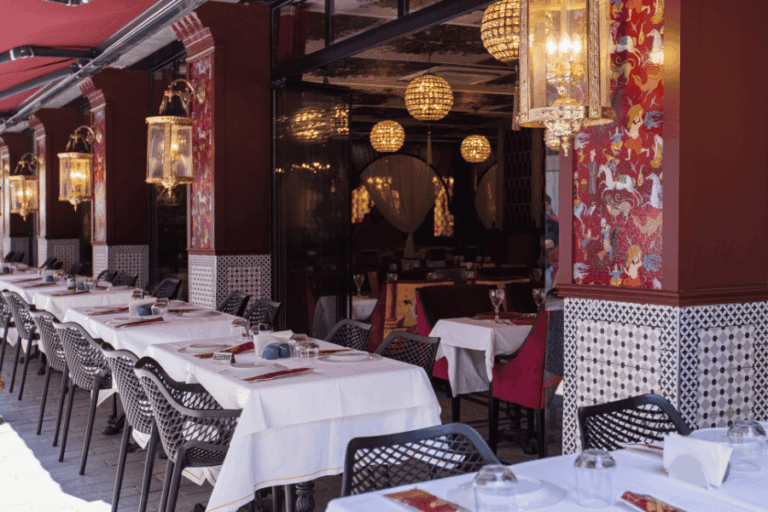Ottoman cuisine culture has been very effective in the formation of modern Turkish cuisine. The formation and enrichment of Turkish cuisine took a long time. It is known that Turks have established many civilizations since their nomadic period. Throughout this long historical adventure, they have acquired a rich culture. This situation also had an impact on the culinary culture and filled Turkish cuisine with unique riches.
The Turks, who interacted with many different cultures, were influenced by these cultures and enriched their cuisine. Although today’s Turkish cuisine is mostly inspired by Ottoman cuisine, it also contains the cultures of the West and East.
In addition to all this, it is difficult to find written works belonging to the eating and drinking culture from the Ottoman period. It is proof that writing on culinary culture has not changed much in the Ottoman period. However, there are works written in the 15th century for the first time. Afterward, there were developments in this field and most of the works were written about the culinary culture in the 19th century.
Mahmut Şirvani – Kitabü’t Tabih / 15th century
Mahmut Şirvani was one of the most famous physicians in the 15th century in the Ottoman Empire. His book, Kitabü’t Tabih, is a book containing recipes. The book also explains the health benefits of many foods. Mahmut Şirvani actually wrote many works in the field of medicine. But his most well-known book is Kitabü’t Tabih. Because he gave the first Ottoman work on culinary culture and recipes.
The original book was written in the 11th century by Mohammed Al Kerim from Baghdad. There are 177 different recipes in the book. In Şirvani’s translation, there are 82 recipes from Ottoman cuisine. These 82 dishes are examples of Ottoman Palace cuisine.
Mehmet Kamil – Melceü’t Tabbahin (Cooks’ Shelter) 18th Century
The work named Cooks’ Shelter, published in the 19th century, tells about Ottoman cuisine. There are 284 recipes for food and drink in the book. The book consists of 12 separate chapters; Many titles such as salad, kebab, compote, stew, cutlet pie, soup, dessert are included.
The author of the book, Mehmet Kamil, is one of the famous doctors of Istanbul. The book, which was published 5 years after the Tanzimat Edict, was written as a reaction to the constant cooking of the same dishes in the Ottoman and Istanbul and wanted to make the richness of the food variety visible. The recipes in the book, the style of the book, and the purpose of its writing are also accepted as an indicator of Westernization. The work was translated into English in the 19th century. From this point of view, the work is also of great importance for the interaction between Western cuisine and Ottoman cuisine.
The book has a special title for desserts to be consumed before and with coffee. In other words, coffee has special importance in the Ottoman culinary culture, and the food prepared alongside coffee creates a new culture.
Ayşe Fahriye – Housewife / 19th Century
Ayşe Fahriye’s work, Ev Kadını, on food and drink and table setting, also gives tips on the Ottoman’s transformed family and urban order. The work, published in 1883, contains 887 different recipes.
In addition to its qualities that give an idea about the Ottoman culinary culture, the work also covers the effects of westernization in the eating and drinking culture.
The work, which was prepared with the idea of eating and drinking with Turkish style for Ottoman and Istanbul women, setting a table setting, and being a good family woman, carries traces of cultural transformations in the 19th century Ottoman Empire. In her book titled Housewife, Ayşe Fahriye gives detailed information about country banquets, maid order, how to present treats, and how to behave at the table.
Mahmut Nedim Bin Tosun- Head Chef / 20th Century
Aşçıbaşı, a work published in the last period of the Ottoman Empire, differs from other works in terms of its content and purpose of writing. Mahmut Nedim Bin Tosun, a soldier, presented 315 different recipes to the reader in a sweet language in this book, which he started to write in order to record the recipes when his friends and himself did not know how to cook.
The author, who recorded the recipes he learned in his military service, reflected not only the culinary culture of Istanbul but also the culinary culture of Anatolia. Although we cannot say that the Ottoman palace cuisine and Istanbul cuisine are far from the Anatolian cuisine culture, the work carries a different value in that it talks about the recipes learned in Anatolia.
In the work written by Mahmut Nedim Bin Tosun with a sweet and mischievous style, the names of a product changing from region to region and its cooking methods are mentioned. The author brings together the harmonic cuisine of the Ottoman Empire by addressing the culinary cultures of many provinces from Rumelia to Anatolia and Eastern Anatolia.








